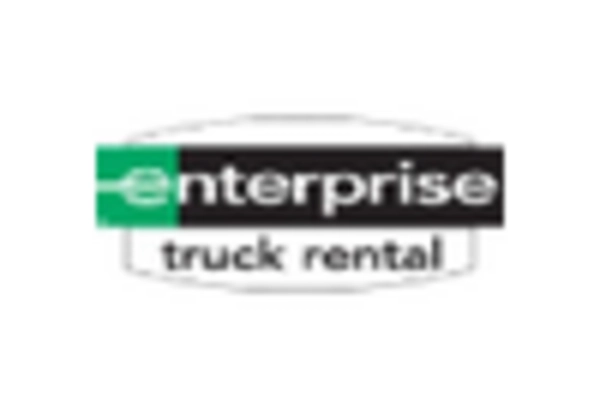Germany : Strong Demand and Infrastructure Growth
Key markets include major cities like Berlin, Munich, and Frankfurt, which are pivotal for logistics and transportation. The competitive landscape features significant players such as Sixt, alongside US-based companies like Ryder and Enterprise Truck Rental. The business environment is characterized by a strong focus on efficiency and sustainability, with local industries such as automotive and manufacturing driving demand for truck rentals. The logistics sector is particularly vibrant, with increasing reliance on rental services for last-mile delivery.
UK : E-commerce Fuels Demand Surge
Key markets include London, Manchester, and Birmingham, where logistics operations are concentrated. The competitive landscape features major players like Hertz and Avis Budget Group, alongside local firms. The business environment is dynamic, with a focus on innovation and customer service. The construction and retail sectors are significant consumers of truck rental services, as they require reliable transportation for goods and materials. The trend towards urbanization is also influencing rental demand.
France : Logistics and Construction Drive Demand
Key markets include Paris, Lyon, and Marseille, which are hubs for logistics and construction activities. The competitive landscape features both international players like U-Haul and local firms. The business environment is characterized by a focus on efficiency and customer satisfaction. The construction sector is a significant driver of demand, as companies require reliable transportation for materials. Additionally, the rise of e-commerce is influencing rental patterns, with businesses seeking flexible solutions for last-mile delivery.
Russia : Infrastructure Needs Drive Rental Demand
Key markets include Moscow, St. Petersburg, and Kazan, where logistics operations are concentrated. The competitive landscape features both local and international players, with companies like Ryder establishing a presence. The business environment is complex, with challenges such as regulatory hurdles and varying infrastructure quality. The construction and retail sectors are significant consumers of truck rental services, as they require reliable transportation for goods and materials. The trend towards urbanization is also influencing rental demand.
Italy : Logistics Sector Drives Market Expansion
Key markets include Milan, Rome, and Turin, which are central to logistics operations. The competitive landscape features both local and international players, with companies like Sixt and Budget Truck Rental having a significant presence. The business environment is characterized by a focus on efficiency and customer service. The construction sector is a major consumer of truck rental services, as companies require reliable transportation for materials. Additionally, the rise of e-commerce is influencing rental patterns, with businesses seeking flexible solutions for last-mile delivery.
Spain : E-commerce Boosts Logistics Needs
Key markets include Madrid, Barcelona, and Valencia, which are hubs for logistics and transportation activities. The competitive landscape features both local and international players, with companies like Hertz and Avis Budget Group having a significant presence. The business environment is dynamic, with a focus on innovation and customer service. The retail and construction sectors are significant consumers of truck rental services, as they require reliable transportation for goods and materials. The trend towards urbanization is also influencing rental demand.
Rest of Europe : Diverse Needs Across Regions
Key markets include smaller cities and regions across various countries, where local logistics operations are concentrated. The competitive landscape features a mix of local and international players, with companies like Sixt and local firms competing for market share. The business environment is characterized by varying regulatory frameworks and infrastructure quality. The construction and retail sectors are significant consumers of truck rental services, as they require reliable transportation for goods and materials. The trend towards urbanization is also influencing rental demand.


















Leave a Comment